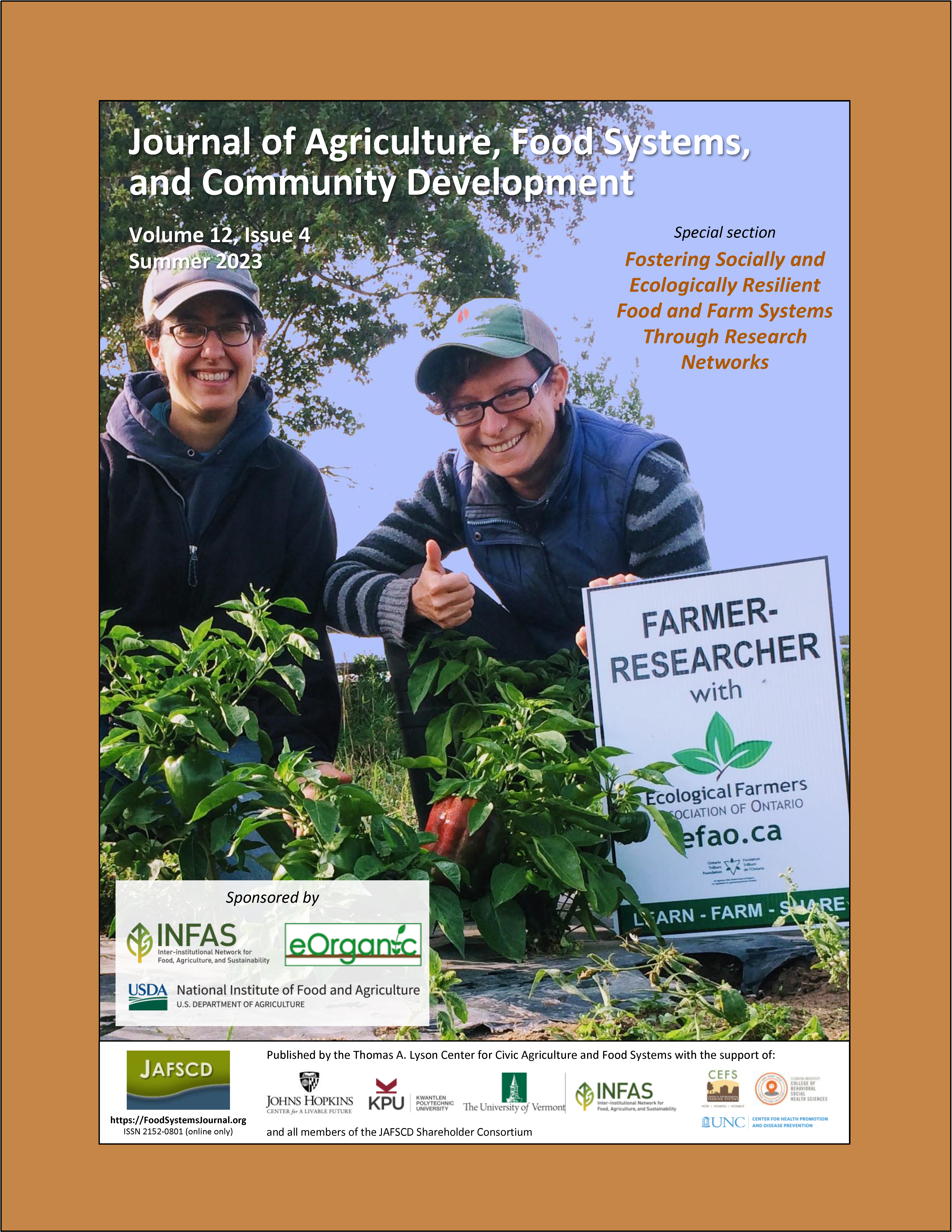“We need a better system”
Maryland crop growers’ perspectives on reducing food loss through donation
DOI:
https://doi.org/10.5304/jafscd.2023.124.002
Keywords:
Food Waste, Food Loss, Food Rescue, Emergency Food, Crop Donation, Food Production, Farming, Worker Health, Food Insecurity, Gleaning, Donation Tax IncentiveAbstract
The donation of unharvested or unsold crops to rescue organizations has been promoted as a strategy to improve healthy food access for food insecure households while reducing production-level food loss and waste (FLW). In this study, we aimed to assess the motivations, barriers, and facilitators for crop donation as a FLW reduction strategy among Maryland farmers. We interviewed 18 Maryland-based food producers (nine frequent crop donors and nine infrequent, by self-report) in 2016 – 2017, soliciting their perspectives on crop donation motivators, process feasibility, and interventions aimed at increasing crop donation. The interviews were thematically coded. All respondents were aware of crop donation as an option, and most expressed interest in reducing FLW by diverting crop surpluses for human consumption. While financial barriers represented one aspect influencing donation decisions, respondents also cited convenience, process knowledge, and liability as key considerations. In contrast to frequent donors, many of whom considered donation a moral imperative, some infrequent donors questioned the expectation that they would donate crops without compensation. Both frequent and infrequent donors were aware of pro-donation tax incentives, and infrequent donors reported being unlikely to use them. This research demonstrates that crop donation motivations, barriers, and facilitators can be diverse. Given the existence of crop surpluses and their potential benefits as emergency food, our results suggest that multiple interventions and policies may contribute to incentivizing and facilitating crop donation (or enabling the purchase of surplus crops) rather than one-size-fits-all approaches. Our findings also highlight a need to prioritize crop recovery methods that enhance growers’ financial stability.
Metrics
Downloads
Published
How to Cite
Issue
Section
License
Copyright (c) 2023 Caitlin A. Ceryes, Kathryn Heley, Danielle M. Edwards , Chergai Gao-Rittenberg, Leah Seifu, Saifra Khan Sohail, Roni A. Neff

This work is licensed under a Creative Commons Attribution 4.0 International License.
The copyright to all content published in JAFSCD belongs to the author(s). It is licensed as CC BY 4.0. This license determines how you may reprint, copy, distribute, or otherwise share JAFSCD content.













